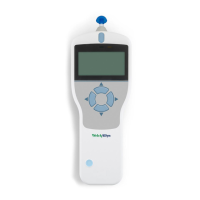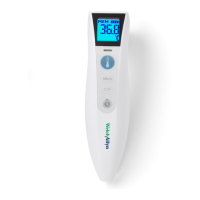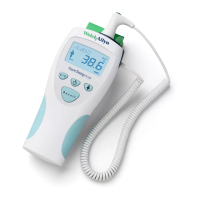sound pressure-the average (rms) difference between the air
pressure that occurs during sound transmission and the ambient
air pressure.
static admittance-the admittance of the middle ear at the air
pressure corresponding to the tympanometric peak. It is calculated
by subtracting the admittance of the ear canal from the admit-
tance at the tympanometric peak. The MicroTymp estimates static
admittance by subtracting the admittance at 200
daPa
from the
peak admittance.
tympanogram-a recording of the admittance of the ear as a
function of ear canal air pressure.
tympanometric gradient-a measure of the shape of the
tympano-
gram in the region of the tympanometric peak. The MicroTymp
calculates the gradient by determining the pressure interval
corresponding to a 50% reduction in admittance on either side
of the peak. Also called the tympanometric width.
tympanometric peak pressure-the value of ear canal air pressure
at which the tympanometric peak occurs.
tympanometric width-see tympanometric gradient.
tympanometry-the measurement of acoustic admittance in the
sealed ear canal as a function of ear canal air pressure.
tympanosclerosis-a complication of otitis media that is charac-
terized by sclerotic regions involving the tympanic membrane,
ossicles, and middle ear mucosa. Tympanosclerosis increases
the stiffness of the middle ear system.
volume velocity-the volume of air that passes through a plane
per unit time.
41

